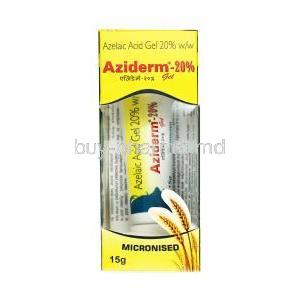Takzema
- I. Introduction to Takzema
- II. Composition of Takzema
- III. Uses of Takzema
- IV. Off-Label Use of Takzema
- V. How Takzema Works
- VI. Dosage and Administration of Takzema
- VII. Side Effects of Takzema
- VIII. Serious Side Effects and Reactions to Takzema
- IX. Interactions of Takzema with Other Medications
- X. Warnings and Contraindications of Takzema
- XI. Careful Administration of Takzema
- XII. Important Precautions When Using Takzema
- XIII. Administration of Takzema to Special Populations
- XIV. Overdosage of Takzema
- XV. Storage Recommendations for Takzema
- XVI. Handling Precautions for Takzema
I. Introduction to Takzema
Understanding Takzema: A Comprehensive Overview
Takzema has become a leading pharmaceutical solution for relieving the symptoms of eczema, offering comfort to those who suffer from this condition. This product represents the progress made in treatments, providing a soothing relief for patients experiencing skin discomfort.
The Therapeutic Role of Takzema in Medicine
To understand the importance of eczema in medicine, it is vital to explore its therapeutic role. It goes beyond alleviating symptoms and focuses on improving the inflammatory environment that contributes to eczema's underlying pathology.
II. Composition of Takzema
Active Ingredients and Their Significance
Takzema is a multi-ingredient Ayurvedic formulation that contains the following ingredients:
- Gandhak Rasayana: 5 mg
- Vanga Bhasma: 15 mg
- Atasi tel: 5 mg
- Triphala: 300 mg
- Amalaki: 300 mg
- Haritaki: 300 mg
- Bibhitaka: 300 mg
- Guduchi: 300 mg
- Daruharidra: 200 mg
- Manjishtha: 200 mg
- Ashwagandha: 100 mg
These ingredients work together to provide a range of benefits, including anti-inflammatory, anti-microbial, and immune-modulating effects1.
Inactive Components of Takzema and Their Functions
Although the inactive components of Takzema may not directly contribute to its effects, they play an essential role in ensuring the texture and stability of the formulation. This, in turn, allows for delivery of the active ingredients to the affected skin.
III. Uses of Takzema
Primary Indications: The Approved Uses of Takzema
Takzema is a proprietary Ayurvedic medicine that is primarily used to improve eczema. It is manufactured by Charak Pharma Pvt. Ltd. and is known for its anti-aging, digestion-improving, skin complexion-enhancing, and immunity-boosting properties1.
Takzema is a multi-ingredient Ayurvedic formulation that contains the following ingredients:
- Gandhak Rasayana: 5 mg
- Vanga bhasma: 15 mg
- Atasi tel: 5 mg
- Triphala: 300 mg
- Amalaki: 300 mg
- Haritaki: 300 mg
- Bibhitaka: 300 mg
- Guduchi: 300 mg
- Daruharidra: 200 mg
- Manjishtha: 200 mg
- Ashwagandha: 100 mg
These ingredients work together to provide a range of benefits, including anti-inflammatory, anti-microbial, and immune-modulating effects1.
Takzema is particularly effective in improving eczema symptoms such as itching, redness, and other bothersome symptoms1. It is also used to treat allergic and contact dermatitis1.
Takzema is available in two forms: tablets and ointment. The recommended dosage is 1 to 2 tablets 2 to 3 times a day or as directed by a physician. The ointment should be applied 2 to 3 times a day or as directed by a physician1.
There are no known side effects associated with Takzema. However, it is best to use this medicine under medical supervision1.
If you are experiencing eczema symptoms, it is important to speak to your doctor to determine if Takzema is right for you1.
A Closer Look at the Conditions Treated by Takzema
Going further into the field of dermatology, Takzema effectively treats a range of skin conditions associated with eczema, providing relief for both outbreaks and long-term issues related to the state.
IV. Off-Label Use of Takzema
Exploring the Unapproved Uses of Takzema
In the world of medicine, tazema is sometimes used in situations that go beyond its officially approved uses. Doctors may occasionally prescribe this remedy for conditions with an underlying cause, such as eczema.
Investigating the Efficacy and Safety of Takzema for Off-Label Conditions
The use of Takzema for purposes not approved by authorities requires careful evaluation of its effectiveness and safety. It is a responsibility undertaken by healthcare professionals with great care and thoughtfulness.
V. How Takzema Works
The Mechanism of Action: Understanding How Takzema Affects the Body
Takzema works by calming down the inflammation that occurs in the layers of the skin. It. It inhibits the substances that promote inflammation, relieving eczema symptoms.
Pharmacodynamics and Pharmacokinetics of Takzema
Takzema's strength in pharmacodynamics lies in its ability to regulate the response, while its pharmacokinetics determine how it is absorbed, distributed, metabolized, and eliminated from the body.
VI. Dosage and Administration of Takzema
Recommended Dosage Guidelines for Takzema
It is crucial to follow the recommended dosage of Takzema to achieve its therapeutic benefits. It is essential to apply the medication as prescribed by a healthcare professional.

Methods of Administration and the Importance of Adherence
Applying Takzema topically requires precision to ensure the drug is appropriately administered to clean and affected areas. It's crucial to follow this regimen to benefit from its therapeutic potential fully.
VII. Side Effects of Takzema
A Guide to Recognizing Common Side Effects of Takzema
Patients might encounter a range of mild to side effects, including skin irritation, dryness, and redness. It is recommended to stay vigilant and monitor these symptoms as they tend to fade with consistent usage or when the medication is discontinued.
Managing and Reporting Adverse Reactions
Managing adverse reactions requires a rounded approach, where timely reporting and addressing symptoms are crucial in preventing worsening side effects.
VIII. Serious Side Effects and Reactions to Takzema
Identifying Serious and Rare Side Effects of Takzema
While it is rare, there may be instances where serious side effects, like angioedema or severe allergic reactions, occur, and prompt attention is necessary.
Steps to Take in the Event of Severe Adverse Reactions
If patients experience reactions, they need to stop using the product and seek immediate medical help to prevent any further harmful effects.
IX. Interactions of Takzema with Other Medications
Potential Drug Interactions with Takzema and Their Implications
The wide range of interactions between pharmaceuticals can be quite complex to manage, especially regarding Takzema. It requires an understanding of how these medications can affect each other in terms of how they are absorbed and distributed in the body and their overall impact on treatment. These interactions can. Enhance or reduce the effectiveness of the medication or even lead to more side effects.
How to Safely Manage Takzema Interactions
Review the patient's medication schedule to avoid any potential interactions. It's essential to consult with healthcare before starting any new medication while taking Takzema. If possible, consider using drug monitoring as it can help reduce the risks of any adverse interactions.
X. Warnings and Contraindications of Takzema
Contraindications for Takzema Use: Who Should Not Take It?
Takzema, like any medication, isn't a one size fits solution. There's a group of people for whom this medication isn't recommended due to either having a reaction to its components or having certain immunological disorders that make it unsuitable for use.
Detailed Warnings: Understanding the Risks Associated with Takzema
It is crucial to have an understanding of the risks linked to Takzema. Patients need to be informed about the possibility of the medication being absorbed into the body with prolonged use, as this could lead to systemic corticosteroid effects.
XI. Careful Administration of Takzema
Takzema Administration: Special Considerations and Monitoring
When using Takzema, healthcare providers must be diligent and consider the area of application and the duration of therapy. They should closely monitor for any signs of absorption or skin reactions, particularly if the treatment is prolonged.
Handling Instructions for Safe Administration of Takzema
To ensure that Takzema is administered safely, it is essential to follow the handling instructions. This involves applying the medication to skin that is clean and dry and thoroughly washing your hands after using it.
XII. Important Precautions When Using Takzema
Necessary Precautions to Ensure Safety While Using Takzema
It is crucial to exercise caution when using Takzema. Avoid using dressings and remain vigilant for any indications of hormonal imbalances. It is important to schedule follow-up appointments to track the patient's progress with the medication.
Monitoring and Prevention Strategies for Potential Risks
To effectively prevent any issues, it is essential to check the condition of your skin, particularly in the area where the medication is applied. Additionally, keep an eye out for any indications of imbalances like weight changes, feelings of tiredness, or shifts in mood.
XIII. Administration of Takzema to Special Populations
Takzema in the Elderly: Adjustments and Cautions
In the population, it is essential to administer Takzema cautiously as individuals age and changes in how their body processes medications, which may require adjustments to the dosage—increased monitoring for any potential side effects.
Use of Takzema in Pregnant Women and Nursing Mothers: Evaluating the Risks
Pregnant and breastfeeding women are a group when it comes to using Takzema. Due to the lack of evidence, it is essential to be cautious and carefully consider the potential benefits compared to any unknown risks for the unborn baby or newborn.
Pediatric Use: Guidelines for Administration to Children
Using Takzema in patients requires careful consideration of the balance between therapeutic benefits and the potential risks of growth retardation and other developmental issues. It is crucial to follow the recommended dosing guidelines for children.
XIV. Overdosage of Takzema
Identifying Signs and Symptoms of Takzema Overdosage
Overdosing on Takzema is an occurrence, but when it happens, it can have serious consequences. It leads to effects related to corticosteroids throughout the body, such as excessive cortisol levels or inhibiting functions in the hypothalamic pituitary adrenal axis.

Emergency Procedures and Treatments for Overdosage
If someone takes much of this medication, it is crucial to seek immediate medical help. The treatment usually focuses on addressing the symptoms and providing support. In some cases, hormonal tests and endocrinological assistance may be required.
XV. Storage Recommendations for Takzema
Proper Storage Conditions to Maintain Takzema’s Efficacy
To maintain the effectiveness of Takzema, it is essential to store it in a secure place away from light and moisture. This will prevent any deterioration of the components.
Stability and Shelf-Life: Keeping Takzema Safe and Effective
It is crucial to understand how Takzema remains stable and effective to ensure its therapeutic benefits. It is essential to adhere to the expiration date and be aware that the effectiveness of the compounds within may decrease as time goes on.
XVI. Handling Precautions for Takzema
Safe Handling Practices for Healthcare Providers and Patients
When dealing with eczema, it is crucial to follow procedures in the medical environment and at home. This involves keeping the medication out of children's reach and wearing gloves if safety guidelines suggest it.
Disposal and Environmental Considerations for Unused Takzema
To maintain an environment, it is essential to follow the proper procedures for getting rid of unused Takzema. Patients should reach out to pharmacists or local waste management services to find out how to dispose of it without causing any harm to the environment.












